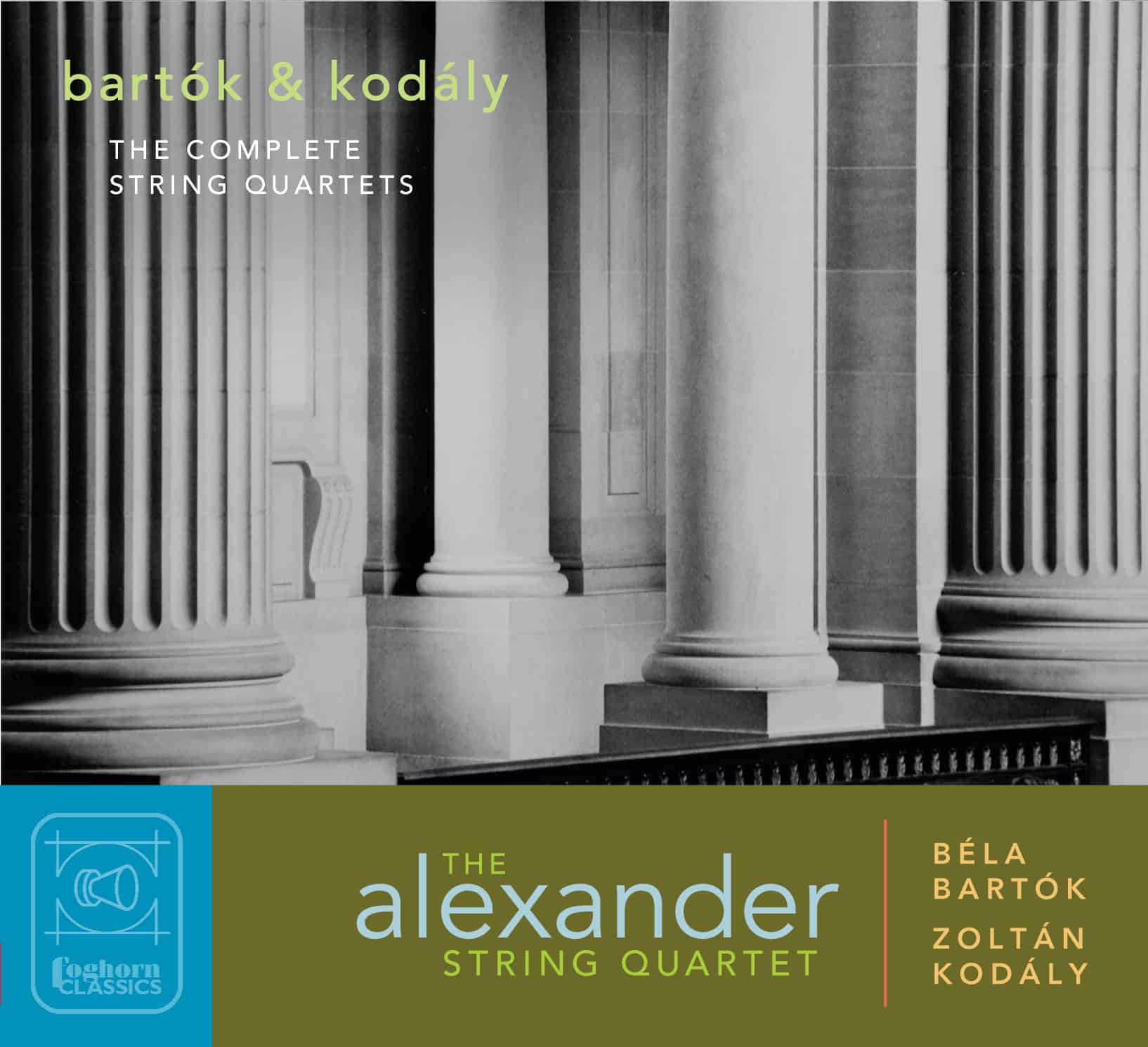 In 1909 four young Hungarian musicians — violinists Imre Waldbauer and János Temesváry, violist Antal Molnár, and cellist Jenö Kerpely — formed a string quartet dedicated to the cause of new music. At a time when musical life in Hungary was generally moribund, the Waldbauer- Kerpely Quartet gave the Hungarian premiere of Debussy’s String Quartet in 1910 (with Debussy in attendance) and performed quartets by Schoenberg and other contemporary composers. But the young quartet had been formed specifically to advance to the cause of Hungarian music. Its members were close friends with two young professors at the Budapest Academy of Music, Béla Bartók and Zoltán Kodály, and for the quartet’s very first concerts — in March 1910 — it played two “composer evenings.” Each was devoted to the music of one of those composers, and these two concerts would be optimistically hailed as “the double birthday of modern Hungarian music.” On March 17, the Kodály evening brought the premiere of his String Quartet No. 1, Cello Sonata, and various piano pieces. Two days later, on March 19, the Bartók evening saw the premiere of his String Quartet No. 1, short works for the piano performed by the composer, and the Budapest premiere of his Piano Quintet. It is a mark of the dedication of the members of the Waldbauer-Kerpely Quartet that they had nearly a hundred rehearsals before they felt they were ready to give those first concerts, and over the next year the ensemble performed these two quartets throughout Europe, including performances in Berlin, Vienna, and Paris. Those pioneering performances by the Waldbauer- Kerpely Quartet established a precedent that would be sustained across the rest of the century. From the first moment, Kodály and particularly Bartók enjoyed the support of what would prove to be a succession of many passionate advocates, dedicated performers who would champion this music at a time when critics and audiences found it alien and threatening.
In 1909 four young Hungarian musicians — violinists Imre Waldbauer and János Temesváry, violist Antal Molnár, and cellist Jenö Kerpely — formed a string quartet dedicated to the cause of new music. At a time when musical life in Hungary was generally moribund, the Waldbauer- Kerpely Quartet gave the Hungarian premiere of Debussy’s String Quartet in 1910 (with Debussy in attendance) and performed quartets by Schoenberg and other contemporary composers. But the young quartet had been formed specifically to advance to the cause of Hungarian music. Its members were close friends with two young professors at the Budapest Academy of Music, Béla Bartók and Zoltán Kodály, and for the quartet’s very first concerts — in March 1910 — it played two “composer evenings.” Each was devoted to the music of one of those composers, and these two concerts would be optimistically hailed as “the double birthday of modern Hungarian music.” On March 17, the Kodály evening brought the premiere of his String Quartet No. 1, Cello Sonata, and various piano pieces. Two days later, on March 19, the Bartók evening saw the premiere of his String Quartet No. 1, short works for the piano performed by the composer, and the Budapest premiere of his Piano Quintet. It is a mark of the dedication of the members of the Waldbauer-Kerpely Quartet that they had nearly a hundred rehearsals before they felt they were ready to give those first concerts, and over the next year the ensemble performed these two quartets throughout Europe, including performances in Berlin, Vienna, and Paris. Those pioneering performances by the Waldbauer- Kerpely Quartet established a precedent that would be sustained across the rest of the century. From the first moment, Kodály and particularly Bartók enjoyed the support of what would prove to be a succession of many passionate advocates, dedicated performers who would champion this music at a time when critics and audiences found it alien and threatening.
| iTunes | Allegro Classical | Amazon |
